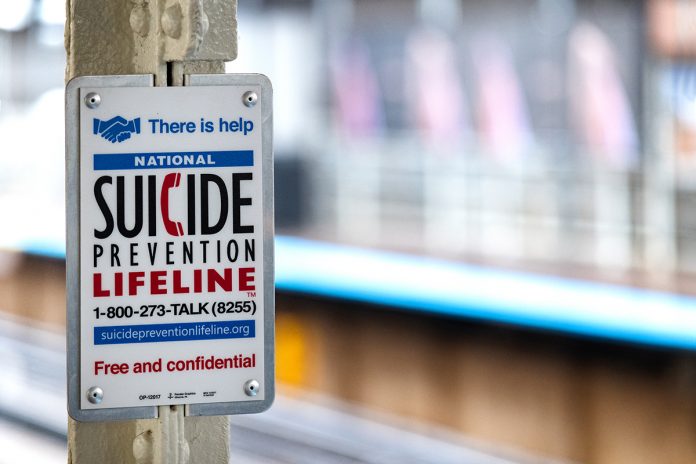Here, Wade Junek describes strategies for helping adolescents in crisis, specifically targeting suicide, assault and elopement
We inhabit our bodies; we live in our minds. This is where we understand the world, make decisions, take action and share our emotions and love with others. It behooves us to develop optimal mental health from the very earliest moments in life. Societies now recognise the role of attachment, resilience, trauma, social determinants of health and the financial benefits of investment in the earlier years. We have yet to measure child development enough to learn if government funds are making a difference and to implement incentives to drive the virtuous circle of increasing improvements.
Despite all this, the second most common cause of death in adolescence is suicide. Suicide along with assault and elopement are the three serious crises. This article provides a succinct summary of the two references on managing them.
The guidelines herein arose in a single integrated mental health program with total responsibility over a city and its surroundings (Population >400,000). It had Intensive Treatment Services (ITS): community based, day treatment and inpatient with a continuum of others; outpatient, specialty services, community and school mental health and more. Staffing included psychiatry, social work, psychology, occupational therapy, therapeutic classroom teachers and nurses. The adolescents were already in ITS and their cognitive functioning was not impaired by serious depressive, psychotic or bipolar disorders.
Separating crisis and treatment
The three crises were common in ITS and pre-empted longer-term treatment intended to address the predisposing factors. The crises compelled clinicians to keep the adolescent alive, to stop assault and threats to safety in the family and stop elopement which prevented the family from providing safety, supervision and treatment. A feasibility study evolved guidelines and a PARENT GUIDE that has worked successfully. The first treatment goal was to develop a working relationship with the adolescent. Crises required immediate full focus, superseding treatment.
These crises were enormously disruptive and distressing to the families who felt helpless, frustrated, scared, confused and saw their lives as out of control. Families wanted a better relationship with their children, wanted to help, were willing to learn and wanted to take back an appropriate parenting role. Frequently, the adolescent was distressed by their own behaviour.
Basic principles were that the strategies met ethical and professional guidelines, involved the parents and clinicians, formulated the crises as maladaptive coping skills (MCS) and did not reinforce the use of MCS. The choices of the adolescents required respect. The mantra was “Adolescents are in charge of choices; adults are in charge of consequences.”
The four guidelines
No Crisis: The treatment goal: help the family shift to a healthy normal developmental trajectory.
The family learned their unconditional and conditional roles and normal expectations of adolescent development. This helped clarify expectations and boundaries. Parents were not expected to be mental health professionals, security guards or police officers.
Suicide (The paradigm): “All acts or threats of acts of suicide-related behaviour are to be assessed by mental health professionals.”
During often lengthy meetings with adolescents, ‘Yes’ or ‘No’ clarity was sought with respect to:
“Are you planning to end your life and kill yourself right now?”
“Are you able and willing to look after your safety?”
Any answer other than a clear ‘NO’ to Q1 or clear ‘YES’ to Q2 was deemed ambiguous, leaving room for suicide. In both situations, the meeting continued until clarity was attained.
Suicide ‘YES’ and Safety ‘NO’
Ultimately psychiatrists make the decision to admit or not. The ethical obligation is to save lives; the patient was now the psychiatrist’s responsibility. This situation led to admission, focused solely on the crisis, supporting the adolescent to take back control of their safety and developing healthy adaptive skills. The staff were empathic, focused solely on the crises, and the adolescent would have no privileges, distractions, objects for self-harm and other details noted in the PARENT GUIDE. Admissions were most commonly 24 hours.
Suicide ‘NO’ and Safety ‘YES’
Crises are emotionally draining for all, take several hours in emergency for the family and can feel unresolved even if the adolescent does not require admission. In front of the clinician the parents declare 24 hours calm down time during which parents and adolescents focus on developing adaptive skills in the absence of all distractions. The parents focus more on their crisis management options.
(see PARENT GUIDE)
Endangering the safety of others or property
“All acts or threats of acts of harm or property destruction to others should be managed by immediate calls to the police with a request for help.”
If the police remove the adolescent, police follow their routine procedures. If the adolescent remains at home, in front of the police, the parents declare the 24 hour calm down routine.
Late, Avoidance, and Elopement
“Institute the curfew rule, ensure the adolescent has knowledge of community resources. Home is not to be a drop-in centre for coming and going as they please.”
This is a more complicated situation and ultimately reduces to decisions about when the adolescent is ‘Allowed Out’. The curfew rule is often all that is needed. A mutual decision is made about curfew times and days. Each day’s privileges depend upon previous day’s compliance. Late times are doubled and subtracted for the next day’s curfew time. Complications arise due to age, lateness, when ‘late’ becomes ‘overnight’ and then becomes ‘no return’. The focus becomes: ‘When is the adolescent ‘Allowed In?’ (see PARENT GUIDE).
Follow up at 6 to 12 months
There were no suicides. Assault, vandalism and threats stopped. The parents learned to manage elopement.
These crises were serious, tense, time consuming and yet, both parents and adolescents regained hopes and plans for the future. A PARENT GUIDE was essential for staff and families.
References
Junek W. (2018). Practical Crisis Management for Parents and Clinicians: Adolescent Suicidal, Aggressive, Elopement Behaviours: Intensive Treatment Settings. JCACAP 27(3): 182-190.
Junek W. (2018) Parent Guide: A Crisis Management Strategy For the Safety of Self and Others and For Adolescents with Serious Maladaptive Behaviors. (JCACAP Supplement) [https://bit.ly/315Yksz]
Please note: This is a commercial profile











